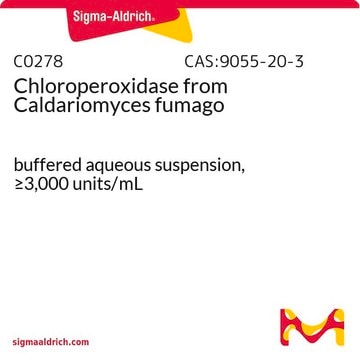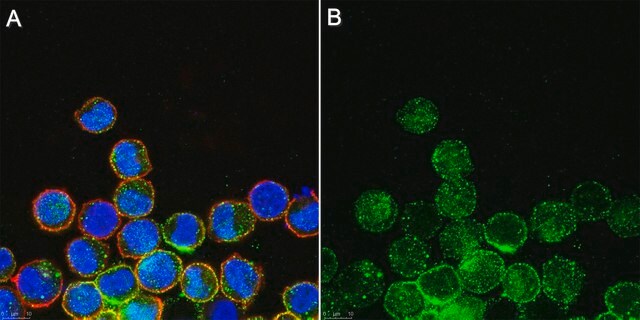C0887
Chloroperoxidase from Caldariomyces fumago
buffered aqueous suspension, 1,000-2,000 units/mg protein (E1%/280)
Synonim(y):
Chloride Peroxidase, Chloride:hydrogen-peroxide oxidoreductase
About This Item
Polecane produkty
pochodzenie biologiczne
fungus (Caldariomyces fumago)
Postać
buffered aqueous suspension
aktywność właściwa
1,000-2,000 units/mg protein (E1%/280)
masa cząsteczkowa
42 kDa
stosunek absorbancji
RZ ~1.0
temp. przechowywania
2-8°C
Szukasz podobnych produktów? Odwiedź Przewodnik dotyczący porównywania produktów
Zastosowanie
Działania biochem./fizjol.
Definicja jednostki
Postać fizyczna
inhibitor
Kod klasy składowania
12 - Non Combustible Liquids
Klasa zagrożenia wodnego (WGK)
WGK 1
Temperatura zapłonu (°F)
Not applicable
Temperatura zapłonu (°C)
Not applicable
Środki ochrony indywidualnej
Eyeshields, Gloves, multi-purpose combination respirator cartridge (US)
Certyfikaty analizy (CoA)
Poszukaj Certyfikaty analizy (CoA), wpisując numer partii/serii produktów. Numery serii i partii można znaleźć na etykiecie produktu po słowach „seria” lub „partia”.
Masz już ten produkt?
Dokumenty związane z niedawno zakupionymi produktami zostały zamieszczone w Bibliotece dokumentów.
Nasz zespół naukowców ma doświadczenie we wszystkich obszarach badań, w tym w naukach przyrodniczych, materiałoznawstwie, syntezie chemicznej, chromatografii, analityce i wielu innych dziedzinach.
Skontaktuj się z zespołem ds. pomocy technicznej







